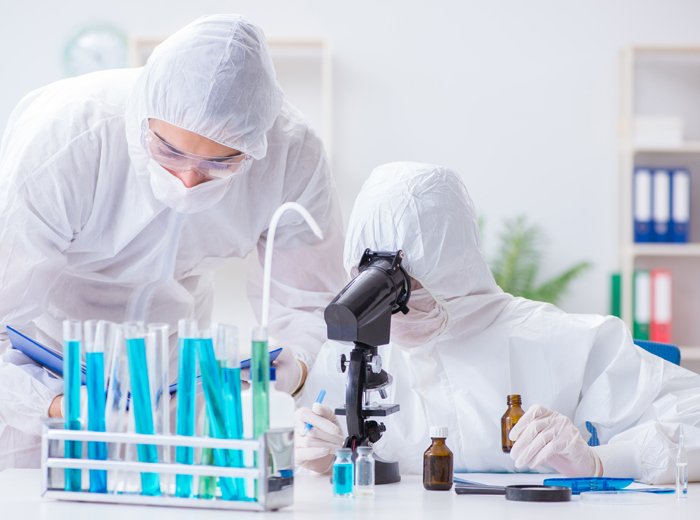Automation System, The Alternative Way to Improve Your Microbiological Analysis in Food Manufacturing
882 Views |

By: สมัชญา วิทูรปกรณ์
Samatchaya Vitoorapakorn
Sales Executive
MERCK LTD.
samatchaya.vitoorapakorn@external.merckgroup.com
ศูนย์ควบคุมและป้องกันโรคสหรัฐอเมริกา (Centers for Disease Control and Prevention, CDC) รายงานว่าในแต่ละปีนั้นชาวอเมริกันราว 1 ใน 6 คนเจ็บป่วยด้วยโรคที่เกี่ยวข้องกับอาหาร และถึงขั้นเสียชีวิตถึง 3,000 ราย ซึ่งความเสียหายที่เกิดขึ้นคิดเป็นมูลค่ารวมถึง 20-40 พันล้านดอลลาร์สหรัฐ (ประมาณ 0.6-1.3 ล้านล้านบาท) ด้วยเหตุนี้ หน่วยงานภาครัฐฯ ผู้เชี่ยวชาญด้านสุขภาพ ผู้ผลิตอาหาร ตลอดจนผู้บริโภคเองจึงหันมาให้ความสำคัญกับมาตรการเพื่อความปลอดภัยของอาหารในชุมชนกันมากขึ้น โดยผู้ผลิตอาหารจะต้องปฏิบัติตามกฎระเบียบต่าง ๆ และจำเป็นต้องได้รับการรับรองคุณภาพเพื่อสร้างความมั่นใจในด้านความปลอดภัยของอาหาร ลดการเรียกคืนผลิตภัณฑ์ และรักษาภาพลักษณ์ที่ดีของแบรนด์ ดังนั้น ทั้งการตรวจสอบในระหว่างขั้นตอนการผลิตและการตรวจสอบผลิตภัณฑ์ในขั้นสุดท้ายจึงมีความสำคัญมาก
แนวโน้มการเพิ่มขึ้นของตัวเลือกสำหรับระบบอัตโนมัติในอุตสาหกรรมอาหาร
เมื่อกฎระเบียบด้านความปลอดภัยของอาหารมีความเข้มงวดมากขึ้น ข้อกําหนดที่ใช้ในการทดสอบอาหารสำหรับผู้ผลิตก็มีเพิ่มมากขึ้นเช่นกัน วิธีการทำงานแบบเดิมทั่วไปในห้องปฏิบัติการอาจไม่เพียงพอต่อการรับมือกับปริมาณงานที่เพิ่มขึ้น แต่ก็นับเป็นข่าวดีเมื่อ Manufacturing Global คาดการณ์ว่าหนึ่งในเทรนด์ที่จะเกิดขึ้นในปี 2565 คือจะมีตัวเลือกสำหรับระบบอัตโนมัติในห้องปฏิบัติการของอุตสาหกรรมอาหารเพิ่มมากขึ้น ซึ่งจะมาช่วยแบ่งเบาภาระได้ จะเห็นว่าจากการระบาดครั้งใหญ่ของ COVID-19 หลายอุตสาหกรรมรวมถึงอุตสาหกรรมอาหารประสบกับปัญหาการขาดแคลนแรงงาน การนำกระบวนการอัตโนมัติมาใช้ในจุดที่สามารถปรับใช้ได้จะช่วยลดปัญหานี้ได้ และยังเพิ่มประสิทธิภาพการทำงานส่งผลให้ผู้ผลิตสามารถบรรลุเป้าหมายถึงแม้จะมีข้อจำกัดด้านจำนวนพนักงาน นอกจากนี้ การใช้ระบบอัตโนมัติจะลดความเสี่ยงต่อการเกิดข้อผิดพลาดจากมนุษย์ (Human error) ทำให้ผลลัพธ์มีความแม่นยำมากขึ้น ส่วนพนักงานก็จะได้ใช้ศักยภาพของตัวเองในงานอื่น ๆ ที่ยังไม่สามารถทดแทนด้วยระบบอัตโนมัติ
According to the Centers for Disease Control and Prevention (CDC), approximately 1 in 6 people get sick and 3,000 deaths are reported per year in the US from foodborne diseases costing over $20-$40 billion in damage per year. This caused government bodies, health professionals, food manufacturers and end consumers to begin putting in more emphasis on measures that aim to provide food safety in the community. For food manufacturers, to ensure quality in terms of food safety to reduce product recalls and to maintain good brand reputations, regulations and certifications must be followed. Thus, in-process and end-product testing are essential.
Trend of Increasing Automated Alternative in Food Industries
With the increase in food safety regulations come greater requirements for food testing by food manufacturers. Conventional methods might no longer be sufficient for managing the tremendous workload in labs. Fortunately, according to Manufacturing Global, one of the trends that is expected in 2022 is the increase in automation in food industry labs. From the wake of COVID-19 pandemic, many industries including food manufacturing have been challenged with labour shortages. Automating processes where possible will help mitigate human labour shortages and increase efficiency to counter the increasing demand, allowing manufacturers to meet their goals with fewer employees on-site. Furthermore, employing automation on operations will allow qualified staff to concentrate on other processes, decrease potential for human error, and delivering more reliable results.



